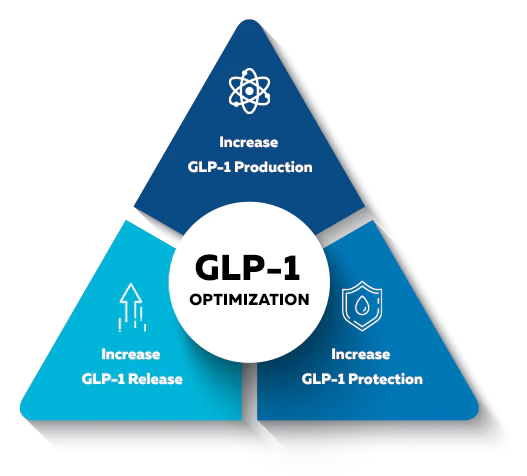
Introduction
In the realm of health and wellness, GLP-1 has emerged as a crucial player, especially in the context of weight management and diabetes treatment. This article explores the significance of GLP-1, its role in the body, and its implications for overall health.
Understanding GLP-1
GLP-1, or Glucagon-Like Peptide-1, is a hormone naturally produced in the intestine in response to food consumption. Its primary function is to stimulate insulin secretion from pancreatic beta cells after meals, which helps regulate blood sugar levels. Beyond its role in glucose metabolism, GLP-1 also plays a pivotal role in appetite regulation and satiety, influencing how hungry or full a person feels.
The Mechanism of Action
When food enters the digestive tract, specialized cells in the intestine release GLP-1 into the bloodstream. Once released, GLP-1 binds to receptors on pancreatic beta cells, triggering the release of insulin. This insulin release helps cells absorb glucose from the bloodstream, lowering blood sugar levels. Additionally, GLP-1 slows gastric emptying, which prolongs the feeling of fullness after eating, thereby reducing appetite.
Importance in Weight Management
The role of GLP-1 in weight management is significant due to its dual action of promoting satiety and enhancing insulin secretion. By prolonging the feeling of fullness and reducing food intake, GLP-1 receptor agonists have been used in the treatment of obesity. These medications not only aid in weight loss but also contribute to improved glycemic control in individuals with type 2 diabetes.
Clinical Applications and Therapeutic Potential
GLP-1 receptor agonists, such as Tirzepatide, have gained prominence in clinical practice for their efficacy in managing both diabetes and obesity. Tirzepatide, for instance, is a novel GLP-1 receptor agonist that has shown superior efficacy in lowering HbA1c levels and reducing body weight compared to other medications. Its once-weekly dosing regimen offers convenience and improved adherence for patients.
For more information on Tirzepatide and to see if it’s the right weight loss solution for you, visit this link.
Conclusion
In conclusion, GLP-1 is a pivotal hormone in metabolic regulation, influencing insulin secretion, appetite control, and weight management. Medications like Tirzepatide harness the benefits of GLP-1 to provide effective treatment options for individuals struggling with type 2 diabetes and obesity. Understanding the role of GLP-1 and its therapeutic potential underscores its importance in modern healthcare, offering new hope for improved outcomes and quality of life.
FAQs About GLP-1 and Tirzepatide:
1.What are the side effects of GLP-1 receptor agonists like Tirzepatide?
Side effects may include nausea, vomiting, diarrhea, and rare cases of pancreatitis. It’s essential to discuss potential side effects with your healthcare provider before starting treatment.
2.How does GLP-1 help with diabetes management?
GLP-1 enhances insulin secretion in response to glucose, lowers glucagon secretion (which reduces glucose production by the liver), and slows gastric emptying, all contributing to better blood sugar control.
3.Is Tirzepatide suitable for everyone with type 2 diabetes?
Tirzepatide is typically prescribed for adults with type 2 diabetes who require additional glucose control despite other treatments. It’s important to consult a healthcare provider to determine if it’s suitable for your specific condition.
4.What dietary considerations should be made when taking GLP-1 receptor agonists?
While taking medications like Tirzepatide, maintaining a balanced diet and regular meal times can help optimize its effectiveness in managing blood sugar levels and promoting weight loss.
5.How does GLP-1 affect appetite and weight loss?
GLP-1 receptor agonists reduce appetite by prolonging the feeling of fullness after meals, which can lead to reduced calorie intake and subsequent weight loss over time.